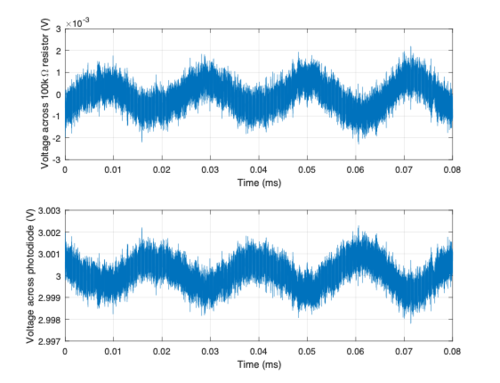Lab Log
Week 7
Preliminary Set-up
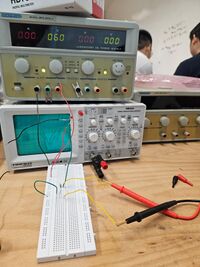
Verified that the circuit is working
Week 8
Set-up
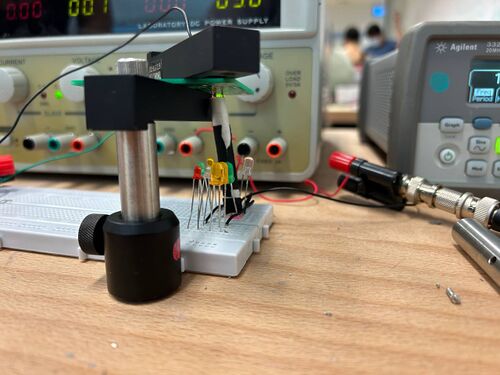
Set-up used to collect results for 5mm Red LED.
Raw Data
Constant Parameters:
Vdiode = 3V
LED Vpp = 2V
For 5mm Red LED,
R = 10kΩ
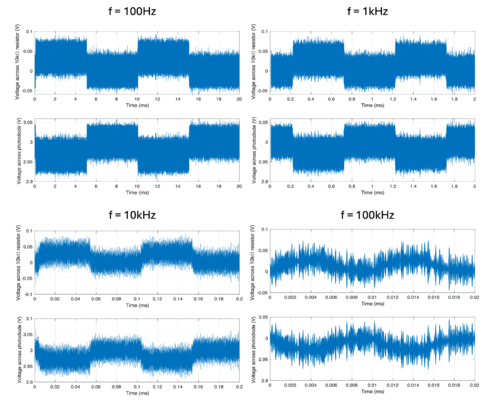
R = 100kΩ
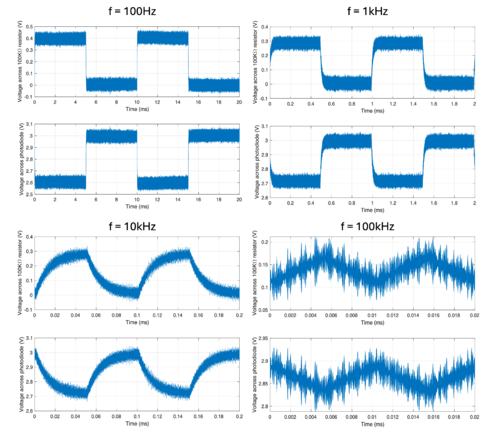
R = 1MΩ
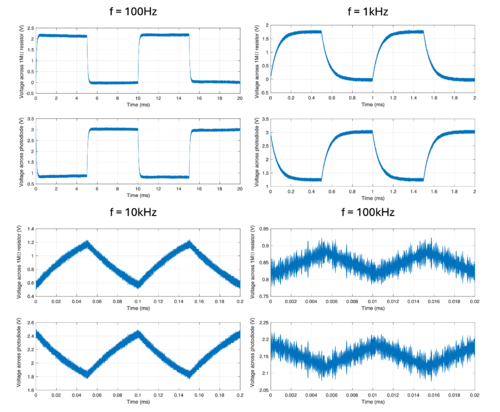
Remarks:
- At low resistance (10kΩ), the voltage across the resistor is too low to make inferences on the photodiode performance. However, it is noted that the frequency of the light source can still be determined.
- As the resistance is increased (100kΩ), a reasonable performance of the photodiode can be observed. We can determine the frequency of the light source and the rise time of the signal. The rise time is estimated to be around 0.3ms and it is closely related to the wavelength sensitivity of the photodiode. We can expect the rise time to stay constant for a given wavelength of the light source.
- With high resistance (1MΩ), the voltage measured is larger and hence the percentage uncertainty associated with the measurement is lower. However, a higher resistance imposes an upper limit on the frequency of the light source. It appears that blinking is faster than the response speed of the LED.
- Based on these results, the response of the photodiode for Red light is in the kilohertz region (between 1kHz to 10kHz) with a rise time of approximately 0.24ms.
Week 9 and 10
Set-up
Raw Data
Constant Parameters:
Vdiode = 3V
LED Vpp = 2V
Sampling Rate = 1GS/s
Background/Noise Signal
Vmean = - 0.0127V
Vmin = -0.0679V
Vmax = 0.0420V
For 5mm Green LED,
R = 10kΩ
- Unable to obtain any meaningful results
R = 100kΩ
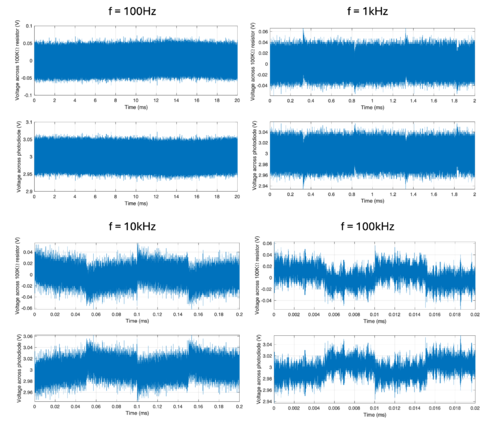
- At low frequencies (100Hz and 1kHz), the signal observed is relatively constant and unable to determine the frequency of the flickering LED.
- At higher frequencies (10kHz and 100kHz), the LED frequency can be determined. However, still unable to determine the rise time.
R = 1MΩ
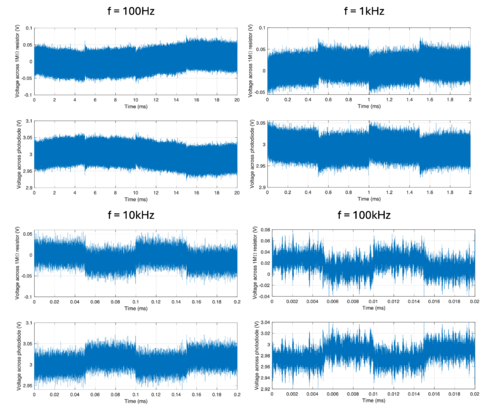
- At low frequencies (100Hz), the signal observed is relatively constant and unable to determine the frequency of the flickering LED.
- At higher frequencies (1kHz, 10kHz and 100kHz), the LED frequency can be determined. However, still unable to determine the rise time.
Remarks:
- It is noticed that the brightness of the LED varies significantly (for a given Vpp) depending on the wavelength.
- With a higher resistance, we can determine the flickering of the LED over a broader range of frequency.
For 5mm Blue LED,
R = 1kΩ
- Unable to obtain any meaningful results
R = 10kΩ
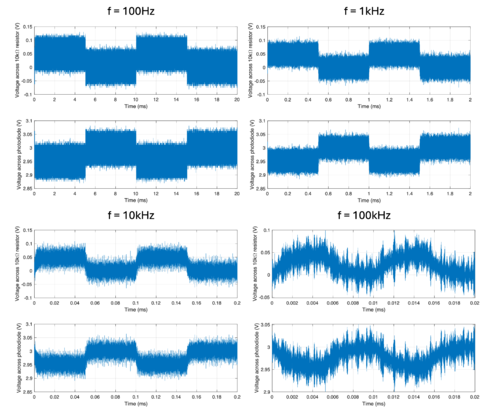
R = 100kΩ
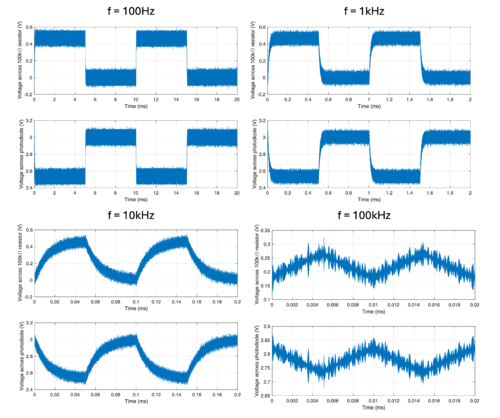
R = 1MΩ
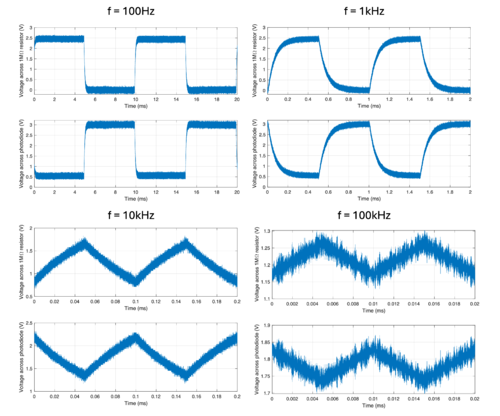
For 5mm Amber LED,
R = 10kΩ
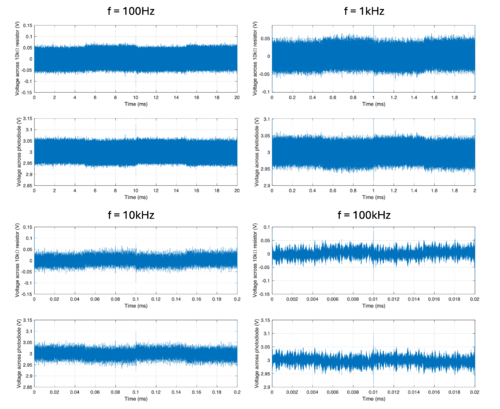
R = 100kΩ
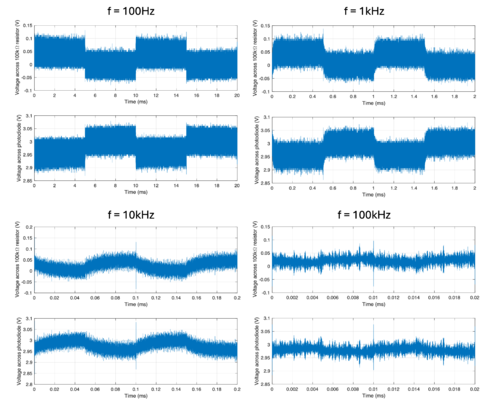
R = 1MΩ
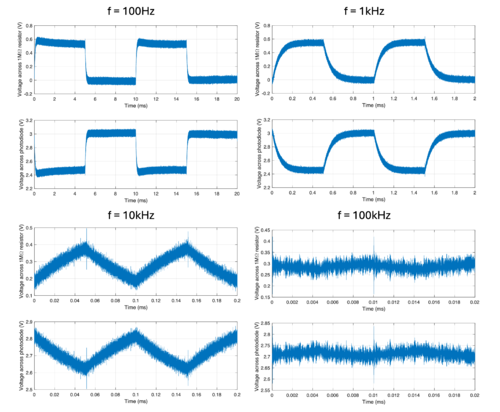
Week 11, 12 and 13
Set-up
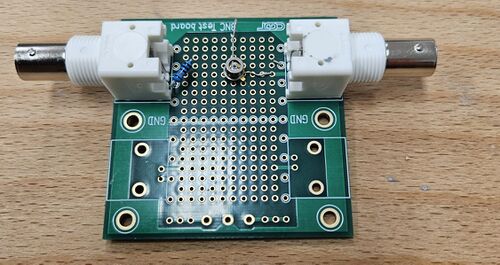
Soldered photodiode and a 100kΩ resistor to a circuit board.
Raw Data
Light Source: Red LED, 1kHz
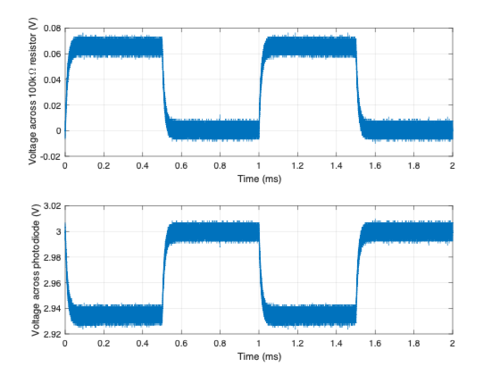
Light Source: White Laptop Screen
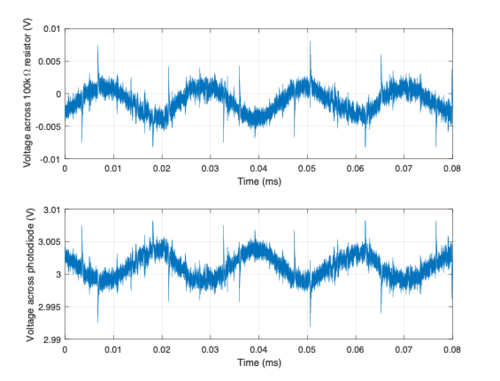
Light Source: Black Laptop Screen
